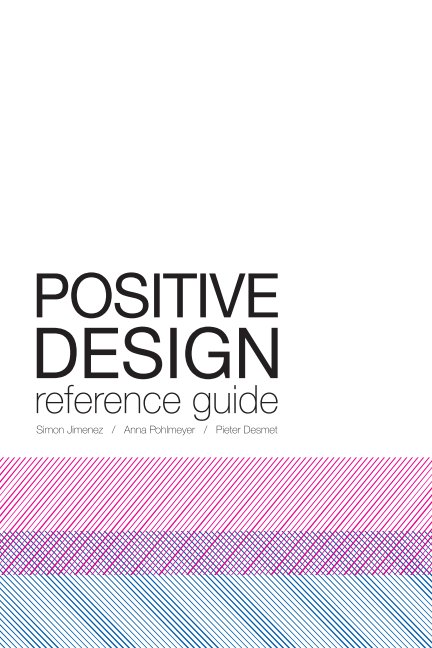Positive Design Reference Guide
de Simon Jimenez, Anna Pohlmeyer & Pieter Desmet
Voici le prix vu par vos clients. Éditer la liste des prix
À propos du livre
How does design mediate, facilitate, or foster user well-being?
What are the universal principles of human experience?
If you find yourself asking these questions, then this guide is for you.
The Positive Design Reference Guide focuses on the why, what and how of human experience – both in general, and in relation to design for well-being. The guide provides you with a quick entry point into the variety of theories that we believe can be relevant for well-being-driven design. It comprises 29 models, theories and frameworks, separated into two sections. The first section presents a collection of theories drawn from (positive) psychology, and the second section presents a collection of theories and frameworks drawn from (positive) design research.
Each theory is introduced with a short summary and a list of key publications that offer more extensive explanations. You are likely to be familiar with some of the theories, but will perhaps also discover some new ones. We warmly invite you to explore its use in your design practice.
The reference guide is an initiative of the Delft Institute of Positive Design. The production was a joint effort of Simon Jimenez, Anna Pohlmeyer & Pieter Desmet. It includes contributions of TU Delft researchers and a foreword by Paul Hekkert.
“Some think theory to be a dry and tedious affair. It is not, because “there is nothing more practical than a good theory". What is tedious, though, is looking up all those theories. From now on, this is no longer a chore, because you are holding them in your hands; twenty-nine gems from psychology and design, which will certainly inform your next project, or even better, inspire you to read on!”
Marc Hassenzahl
Author of Experience Design:
Technology for all the right reasons
What are the universal principles of human experience?
If you find yourself asking these questions, then this guide is for you.
The Positive Design Reference Guide focuses on the why, what and how of human experience – both in general, and in relation to design for well-being. The guide provides you with a quick entry point into the variety of theories that we believe can be relevant for well-being-driven design. It comprises 29 models, theories and frameworks, separated into two sections. The first section presents a collection of theories drawn from (positive) psychology, and the second section presents a collection of theories and frameworks drawn from (positive) design research.
Each theory is introduced with a short summary and a list of key publications that offer more extensive explanations. You are likely to be familiar with some of the theories, but will perhaps also discover some new ones. We warmly invite you to explore its use in your design practice.
The reference guide is an initiative of the Delft Institute of Positive Design. The production was a joint effort of Simon Jimenez, Anna Pohlmeyer & Pieter Desmet. It includes contributions of TU Delft researchers and a foreword by Paul Hekkert.
“Some think theory to be a dry and tedious affair. It is not, because “there is nothing more practical than a good theory". What is tedious, though, is looking up all those theories. From now on, this is no longer a chore, because you are holding them in your hands; twenty-nine gems from psychology and design, which will certainly inform your next project, or even better, inspire you to read on!”
Marc Hassenzahl
Author of Experience Design:
Technology for all the right reasons
Site Web de l'auteur
Caractéristiques et détails
- Catégorie principale: Enseignement
-
Format choisi: 15×23 cm
# de pages: 80 -
ISBN
- Couverture souple: 9789461864253
- Date de publication: mars 13, 2015
- Langue English
- Mots-clés positive design, design for experience, design for well-being, design, well-being
Voir plus


